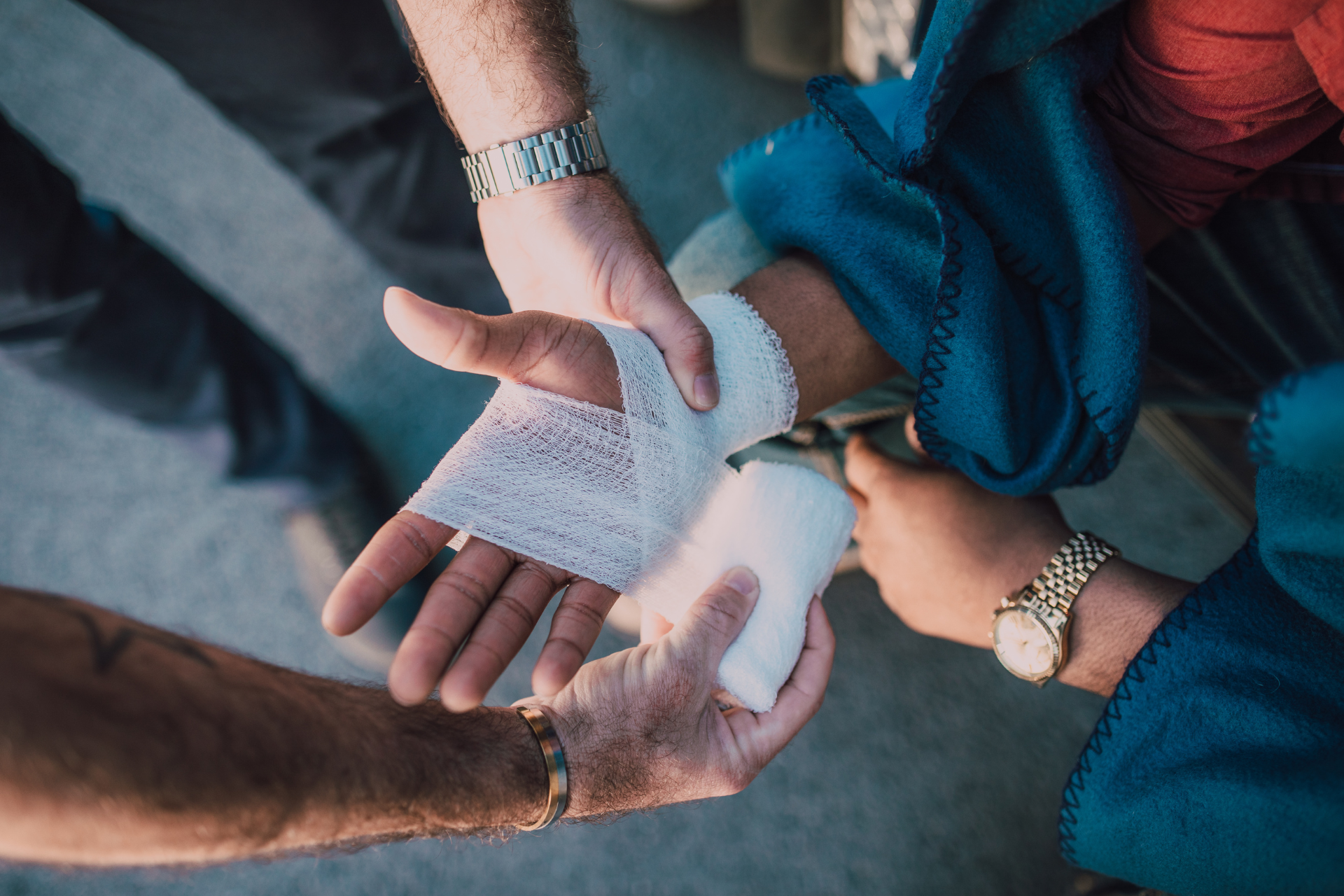Blog Layout
How to Manage Workers Compensation Issues in Your Business
May 7, 2024
This is a subtitle for your new post
At Williamson & Melendez, PLLC, we understand that managing a business comes with its set of challenges, especially when an employee gets injured on the job. While it's crucial to focus on the well-being and recovery of your employee, the looming threat of a workers compensation lawsuit can be a significant concern.
Why Most Workers Compensation Claims Don’t End in Lawsuits
It's comforting to know that most workers compensation claims are resolved without litigation. However, there are specific scenarios where consulting with a workers compensation lawyer becomes essential to protect your business interests. Here are three critical situations where legal advice is indispensable:
1. Lack of Workers Compensation Insurance
As an employer, maintaining workers compensation insurance is not only a prudent practice but a legal requirement in many states. If you find yourself without this insurance and an employee is injured, the consequences can be severe. Your business could be held liable for all damages, including medical expenses and lost wages. Furthermore, the Occupational Safety and Health Administration (OSHA) may impose fines for failing to carry mandatory insurance. Engaging a lawyer promptly in such cases can help minimize the financial fallout and ensure compliance with legal standards.
2. Employee Appeals the Insurance Decision
When an employee reports an injury, as an insured employer, you'll file a claim with your insurance provider. Should the insurance company deny the claim, the employee might appeal this decision. This is a juncture where the guidance of a seasoned lawyer is crucial. They can help navigate the appeals process and work towards a resolution that safeguards your business's interests.
3. Employee Rejects a Settlement and Opts for Litigation
If your insurance company acknowledges the claim and proposes a settlement, the employee has the option to accept or decline it. Acceptance usually includes an agreement not to sue your business. However, if the employee refuses the settlement and decides to sue, it’s critical to have legal representation. A competent lawyer will prepare and defend your business against potential litigation.
Experiencing an employee injury and facing potential legal challenges can be daunting for any employer. If any of these scenarios resonate with you, or if you foresee potential complications, it’s important to act swiftly.
At Williamson & Melendez, PLLC, our team is dedicated to providing the support and guidance you need to manage workers compensation claims effectively and protect your business. Reach out to us today
to discuss your situation and explore how we can assist you in preventing a workers compensation lawsuit.

October 2, 2024
If you've been injured on the job, securing the full workers' compensation benefits you're entitled to is crucial for your recovery and financial stability. However, navigating the process can be complicated. At Williamson & Melendez, PLLC, we are here to guide you through each step and ensure that you get the maximum benefits allowed by law. Here’s a step-by-step guide on how to maximize your workers' compensation benefits: 1. Report Your Injury Immediately Timing is everything when it comes to workers’ compensation. As soon as an injury occurs, notify your employer. Even if your injury seems minor at first, reporting it right away can prevent complications later on. Most states have a strict timeline for reporting workplace injuries—failing to meet this deadline can result in a denial of benefits. Include as many details as possible, such as the time, date, location, and circumstances of the injury. 2. Seek Medical Attention Right Away Even if your injury doesn’t seem serious, getting medical attention is essential. Not only does it ensure your health, but it also creates a medical record of your injury. Make sure to follow your company’s procedures for medical treatment, as they may require you to see a specific doctor or clinic. Always be honest and thorough in your descriptions of the injury and any pain you are experiencing to ensure your medical records accurately reflect the situation. 3. Keep Detailed Records Document everything related to your injury and the workers’ compensation process. This includes medical bills, correspondence with your employer and insurance company, and details of any lost work time or wages. Keeping track of this information can help protect you if there’s a dispute about your claim or the benefits you’re owed. 4. Follow Your Doctor’s Orders After your initial treatment, follow your doctor’s recommendations closely. Whether it’s attending follow-up appointments, participating in physical therapy, or adhering to work restrictions, doing exactly what your doctor advises is critical. Failure to comply with medical instructions could give your employer or the insurance company grounds to reduce or deny your benefits. 5. Consult with an Experienced Workers' Compensation Attorney The workers’ compensation process can be filled with legal complexities, and without expert guidance, it’s easy to make mistakes that could reduce your benefits. A workers' compensation attorney can help ensure all paperwork is filed correctly, negotiate with the insurance company, and fight for your rights if your claim is wrongfully denied. With Williamson & Melendez, PLLC by your side, you can focus on healing while we handle the legal details. Maximizing your workers’ compensation benefits requires timely action, proper documentation, and compliance with legal requirements. If you’re unsure about any part of the process, don’t hesitate to reach out to a professional. Schedule a consultation with Williamson & Melendez, PLLC today, and let us help you get the compensation you deserve.

July 9, 2024
Workplace injuries are a significant concern for employers and employees alike. They can lead to lost productivity, increased medical expenses, and, most importantly, serious harm to workers. At Williamson & Melendez, PLLC, we understand the importance of maintaining a safe work environment. In this post, we’ll explore some of the most common workplace injuries and offer practical tips on how to prevent them. 1. Slips, Trips, and Falls Overview: Slips, trips, and falls are among the most frequent workplace accidents. They can occur due to wet floors, uneven surfaces, poor lighting, or obstructed pathways. Prevention Tips: Keep walkways clear of clutter. Use non-slip mats in areas prone to wetness. Ensure adequate lighting throughout the workplace. Promptly clean up spills and post warning signs for wet floors. 2. Strains and Sprains Overview: Muscle strains and sprains often result from overexertion, improper lifting techniques, or repetitive motions. Prevention Tips: Provide proper training on lifting techniques. Encourage employees to take regular breaks to avoid repetitive strain. Implement ergonomic solutions for workstations. Use mechanical aids for heavy lifting whenever possible. 3. Cuts and Lacerations Overview: Cuts and lacerations can occur in any workplace, particularly in environments where sharp tools and machinery are used. Prevention Tips: Provide appropriate protective gear such as gloves and safety glasses. Ensure all tools and machinery are well-maintained and used correctly. Conduct regular safety training sessions. Clearly label and store sharp objects safely. 4. Exposure to Harmful Substances Overview: Exposure to chemicals, fumes, or other harmful substances can lead to acute or chronic health issues. Prevention Tips: Use proper ventilation systems in areas where harmful substances are present. Provide personal protective equipment (PPE) such as masks and gloves. Ensure proper storage and labeling of all hazardous materials. Conduct regular health and safety audits. 5. Repetitive Strain Injuries (RSIs) Overview: RSIs are caused by repetitive tasks, awkward postures, or prolonged periods of activity without adequate rest. Prevention Tips: Ergonomically design workstations to reduce strain. Encourage regular breaks and stretching exercises. Rotate tasks to prevent overuse of the same muscle groups. Provide training on proper posture and movement techniques. 6. Vehicle-Related Accidents Overview: For employees who drive as part of their job, vehicle-related accidents are a significant risk. Prevention Tips: Ensure all vehicles are regularly maintained and inspected. Provide defensive driving training. Enforce policies on seatbelt use and distracted driving. Monitor and manage driver fatigue. Contact Us At Williamson & Melendez, PLLC, we are dedicated to helping businesses create safer workplaces. If you have any questions about workplace safety or need legal assistance with a workplace injury, don’t hesitate to contact us. Together, we can work towards a safer, healthier work environment for everyone. For more information or to schedule a consultation, contact us today.
